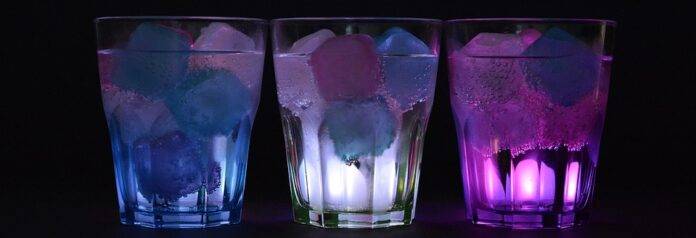Fermented sodas are quickly gaining ground as health-conscious consumers move away from traditional sugary soft drinks in favor of functional beverages with added health benefits. These fizzy, flavorful drinks contain live cultures, such as probiotics, that support gut health—but preserving their taste stability remains a challenge. Striking the right balance between flavor consistency and active cultures is now a key competitive factor for brands in the booming fermented beverage market.
The Importance of Taste Stability in Fermented Soft Drinks
In the soft drink industry, taste consistency is essential to building consumer trust and brand loyalty. With fermented sodas, however, natural microbial activity can lead to changes in flavor, carbonation, and texture over time—even after packaging. Maintaining taste stability in fermented drinks is therefore more complex than in conventional sodas.
When consumers pick up their favorite kombucha or probiotic soda, they expect a familiar flavor. Failure to meet this expectation can lead to poor reviews, reduced repeat purchases, and reputational damage—especially in a niche market where premium prices are common.
Key Factors Affecting Taste Stability in Fermented Sodas
Several variables influence how stable a fermented soda’s taste remains throughout its shelf life:
-
Fermentation Method: Continuous vs. batch fermentation can influence the pH, sugar content, and flavor retention.
-
Microbial Strain: Different strains of probiotics (e.g., Lactobacillus, Bifidobacterium, Saccharomyces) have distinct impacts on flavor and acidity.
-
Base Ingredients: Tea, fruit juice, herbs, and botanical extracts each respond differently to fermentation.
-
Packaging Material: Glass, aluminum, or PET plastic offer varying oxygen and light barriers, affecting product degradation.
-
Storage Conditions: Fluctuating temperatures during transport or retail display can accelerate microbial activity and flavor drift.
Strategies for Enhancing Taste Stability While Retaining Live Cultures
Top brands are using innovative techniques to preserve flavor while ensuring their fermented sodas retain viable probiotics:
1. Controlled Fermentation Environments
By using temperature-controlled fermentation chambers and carefully timed processes, companies can reduce over-fermentation and variability in the final product.
2. Post-Fermentation Flavor Adjustment
Some producers add cold-pressed juices, herbs, or botanicals after fermentation to standardize flavor profiles and counteract acidic or bitter notes.
3. Cold Chain Logistics
Maintaining a refrigerated supply chain from production to shelf slows microbial activity and preserves taste and texture without the need for pasteurization.
4. Natural Stabilizers
Plant-based stabilizers such as pectin, gum acacia, and citrus fiber can help maintain mouthfeel and flavor integrity without affecting live cultures.
5. Secondary Fermentation in Packaging
Brands like Health-Ade and GT’s Kombucha use bottle-conditioning methods that allow slight carbonation development post-packaging while still controlling flavor drift.
The Role of Live Cultures in Fermented Sodas
Live cultures, especially probiotics, are the key health-boosting component of fermented sodas. These microbes contribute to:
-
Improved digestion
-
Enhanced immunity
-
Reduced inflammation
However, they also continue metabolizing sugars and organic compounds after bottling, which can affect both carbonation and flavor over time. Thus, manufacturers must strike a careful balance between product shelf life, flavor consistency, and probiotic viability.
Innovative Brands Leading the Way
Health-Ade Kombucha (USA)
-
Uses cold-pressed juice for flavor and glass bottles for optimal preservation
-
Operates a strict cold chain from brewery to shelf
-
Reported $100M+ in annual revenue as of 2024
Culture Pop Soda (USA)
-
Combines live cultures with fruity botanicals like turmeric and ginger
-
Offers shelf-stable probiotic sodas without refined sugar or artificial sweeteners
-
Grew 300% year-over-year between 2022 and 2024
Lo Bros (Australia/UK)
-
Sells probiotic sodas and kombucha with natural fruit flavors
-
Uses natural carbonation and non-pasteurization techniques
-
Expanded into Tesco and Woolworths stores in 2024
Industry Insights and Market Trends
The global fermented beverages market—including sodas, kombucha, kefir, and shrub drinks—is projected to reach $12.5 billion by 2027, growing at a CAGR of 9.8%, according to Statista. Key trends driving this growth include:
-
Rising awareness of gut-brain connection
-
Growing demand for non-alcoholic functional beverages
-
Consumer preference for clean labels and natural ingredients
-
Increased retail shelf space in natural food chains and mainstream supermarkets
Financial Outlook for Fermented Sodas
While specific data on fermented sodas alone is limited, kombucha sales surpassed $1.8 billion globally in 2024, with fermented sodas riding the same functional beverage wave. Brands that successfully master formulation science, quality control, and consumer marketing can command premium price points and enjoy gross margins exceeding 55–65%.
Conclusion
Balancing taste stability and live cultures is one of the most important challenges facing the fermented soda industry today. As consumer interest in gut-friendly, low-sugar soft drink alternatives continues to rise, the brands that can deliver consistent, great-tasting, and genuinely functional products will lead the market.
By leveraging controlled fermentation processes, cold chain logistics, and flavor optimization techniques, innovative players can craft fermented sodas that are both delicious and beneficial. With the right strategy, these brands are poised to dominate a fast-growing sector that shows no signs of slowing down.




